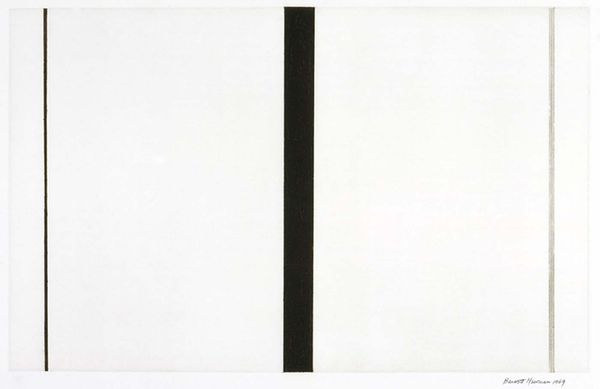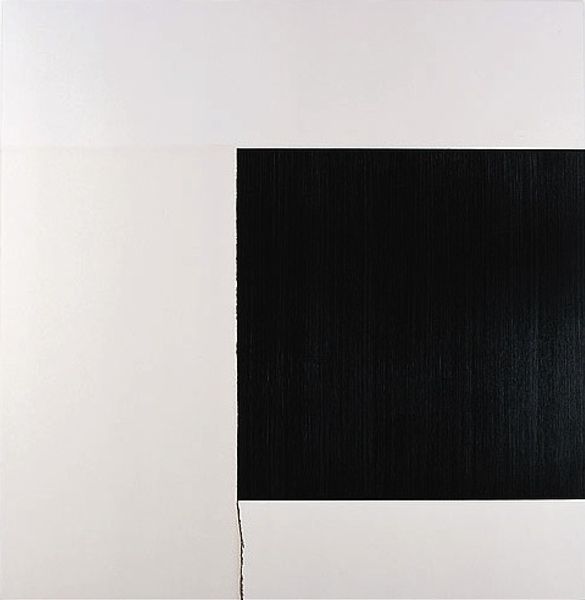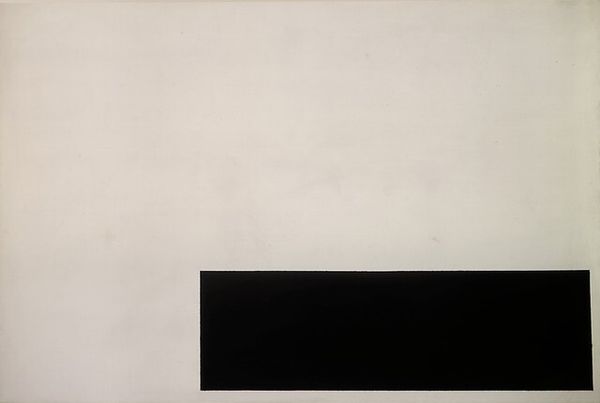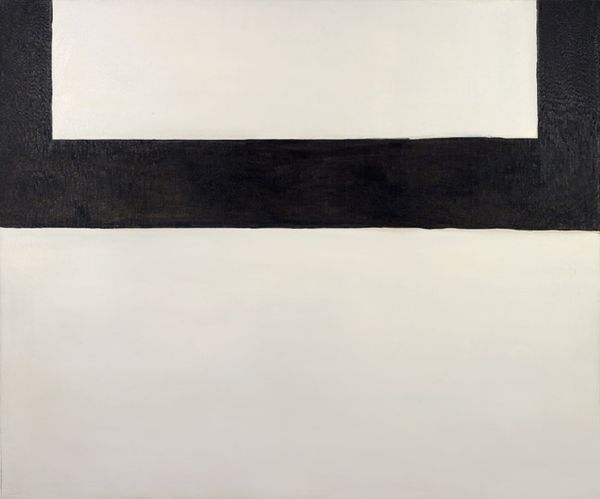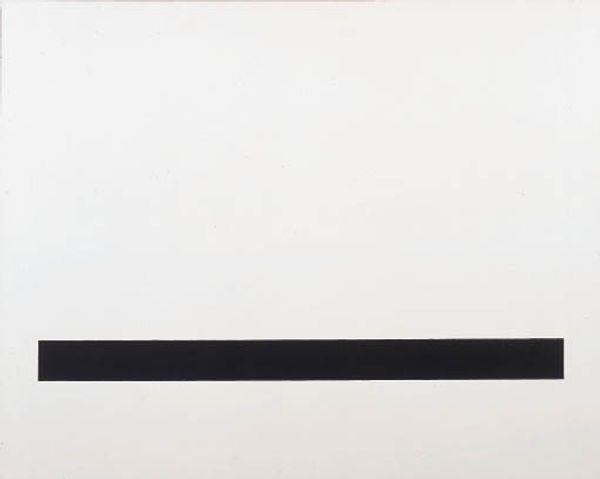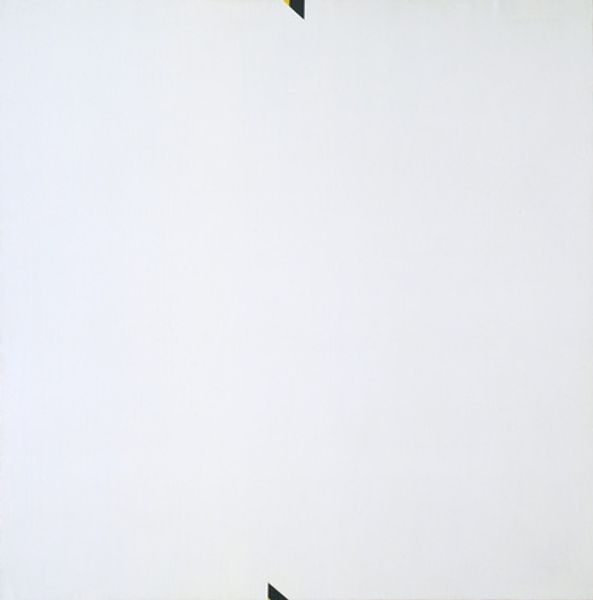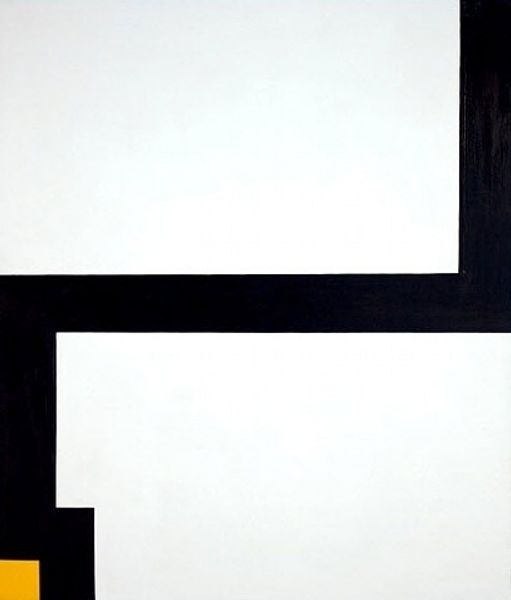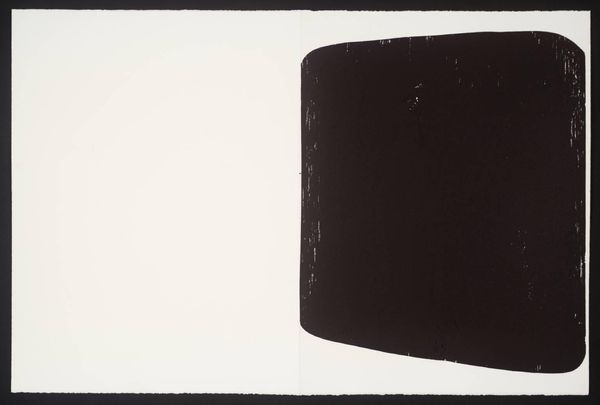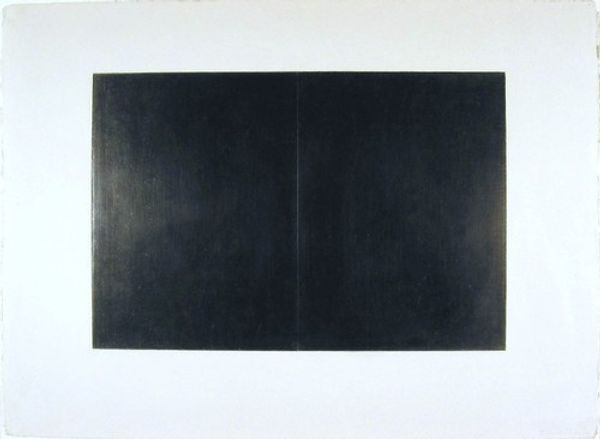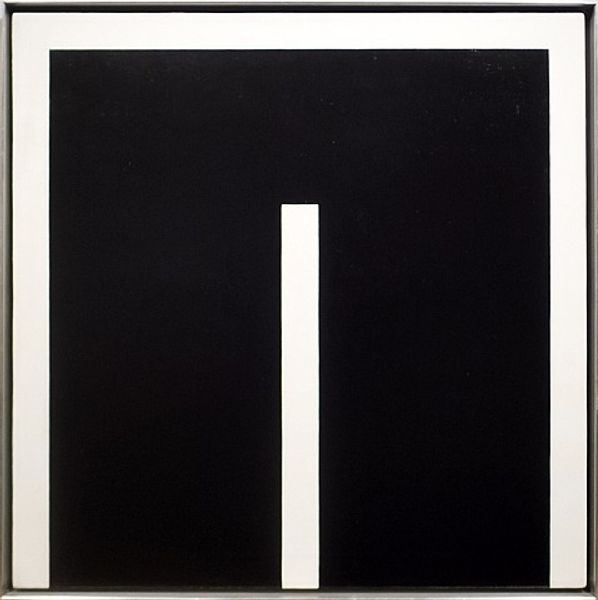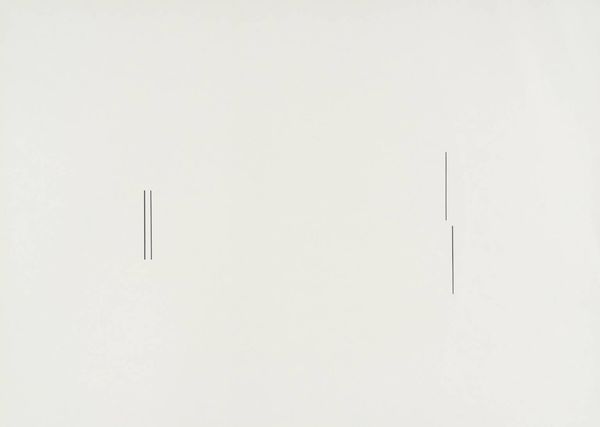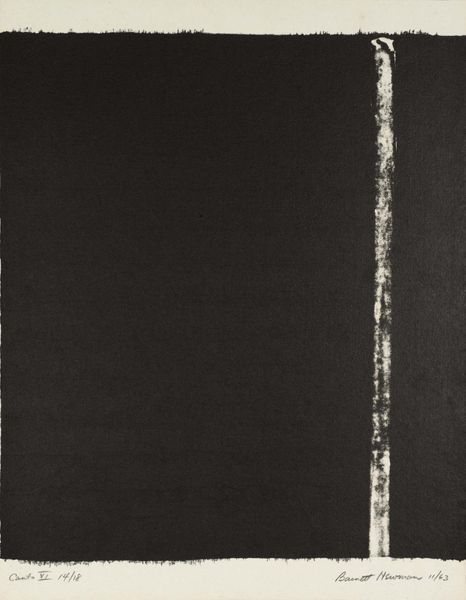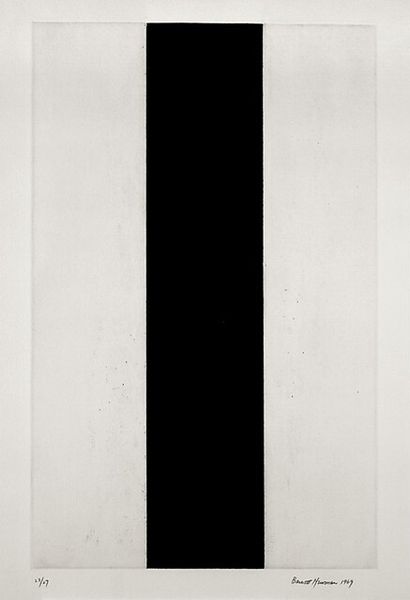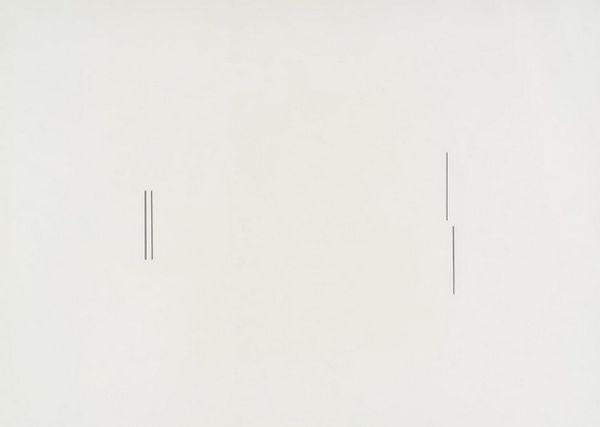
print, etching
#
abstract-expressionism
#
minimalism
# print
#
etching
#
abstraction
#
line
#
monochrome
Dimensions: image: 37.15 x 59.69 cm (14 5/8 x 23 1/2 in.) sheet: 56.83 x 80.33 cm (22 3/8 x 31 5/8 in.)
Copyright: National Gallery of Art: CC0 1.0
Curator: Immediately, I’m struck by a sense of meditative calm. It’s surprisingly compelling for such a simple composition. Editor: Indeed. What we have here is "Untitled Etching #1" by Barnett Newman, created in 1969. Newman was a key figure in Abstract Expressionism, and later Minimalism. It is, as the name suggests, an etching, a type of printmaking. Curator: Three stark vertical lines bisecting the pale field – two narrow lines at the far edges, framing the composition, and a powerful, confident dark stripe dead center. They evoke a symbolic portal to me, somehow. Editor: Newman’s interest in creating sublime, monumental art stemmed, in part, from the trauma of the Second World War. Art, for him, became a search for universal, spiritual truths. In the late 1940s he created his first "zip" paintings – large canvases vertically divided by a painted line, in order to set art free from constraints of European formalism. These explorations would influence an entire generation of artists, working in multiple media. Curator: And it works, even in this seemingly simple etching. That central “zip,” as you call it, anchors everything, like a symbolic axis mundi. The subtle tonal variations in the off-white expanse around it become incredibly important. It creates this sense of infinite space. Editor: Precisely. Think about how galleries and museums shaped Newman's career, from Peggy Guggenheim’s "Art of This Century" in the 40s, to the later prominence of MoMA – each played a role in defining how we see, interpret and value his works. Newman actively shaped his artistic image through carefully staged exhibitions. Curator: This etching echoes the human yearning for connection to something profound – I also appreciate the courage to use the vocabulary of minimalist line art. There are echoes here of Agnes Martin and Sol LeWitt, yet the work clearly possesses Newman’s voice. Editor: That interplay of bold visual statement and understated emotional impact, the mark it made in abstract expressionism -- that's what resonates even now. Curator: Yes, it reminds us that even the simplest forms can hold complex meanings and enduring resonance.
Comments
No comments
Be the first to comment and join the conversation on the ultimate creative platform.
